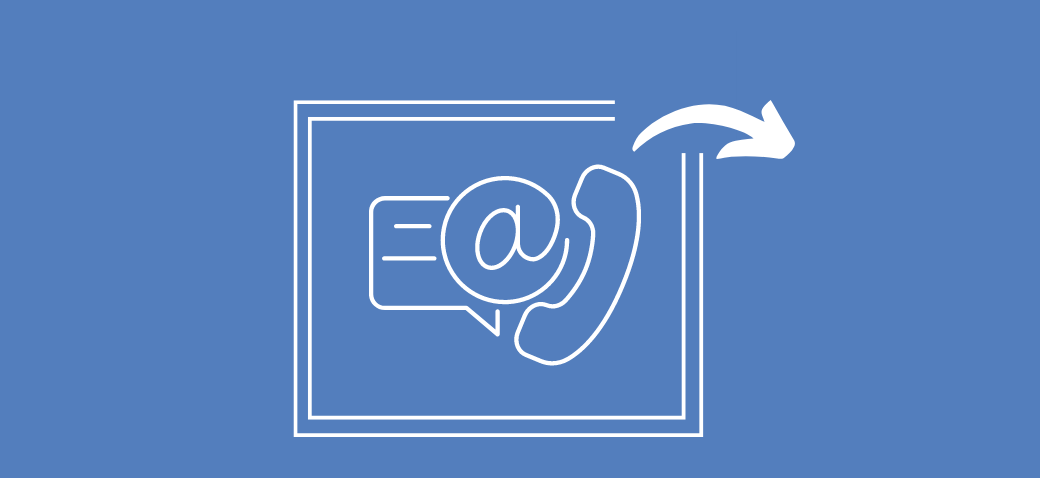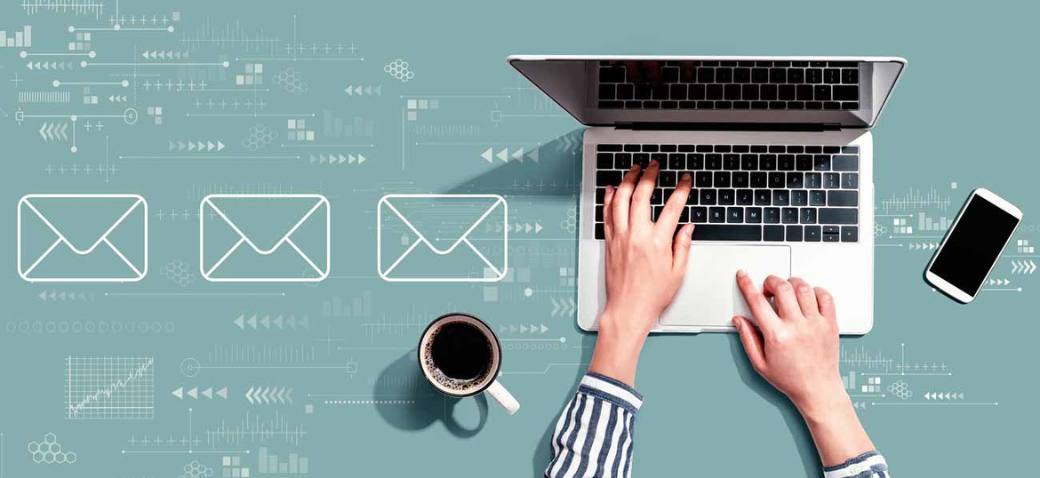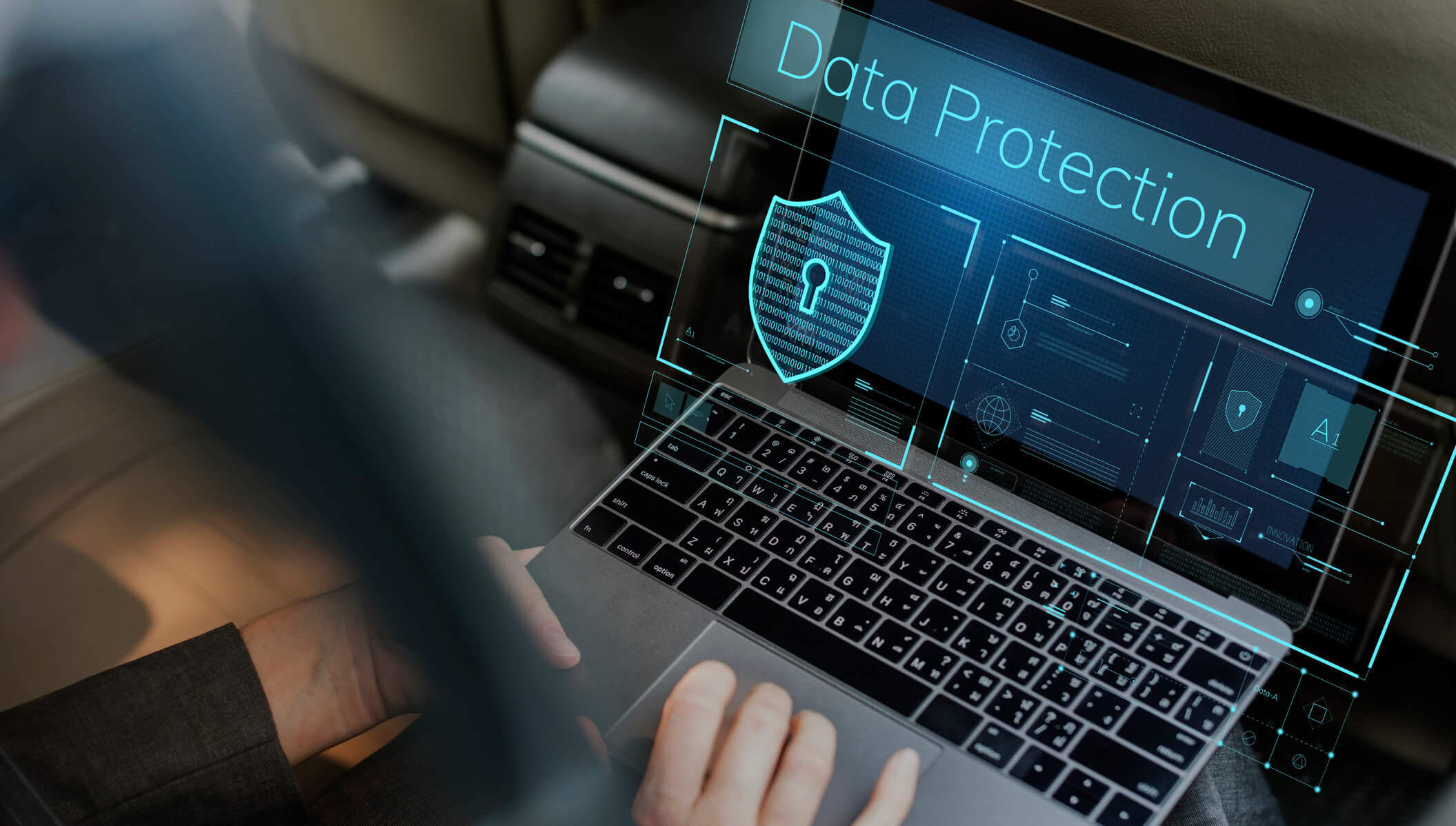Our blog
Resources and insights
The latest industry news, interviews, technologies, and resources.

Email Industry
Beyond Gmail: Navigating the Diverse European Email Landscape
As Europeans increasingly prioritize data privacy and ethical concerns, choosing the right email provider becomes a personal statement. While global giants like Gmail and Outlook hold significant sway

Statistics
Don't Wait to Engage: Why Speedy Responses and SLAs Win in Email
Email response times matter because they are a controllable element with a clear and immediate impact on your customer’s experience.

Email Industry
Is Email Marketing Doomed? Google & Yahoo Say NO SPAM, NOT NO EMAIL!
Remember the "good old days" when your inbox was a chaotic wasteland of marketing emails? Not anymore, thanks to Gmail and Yahoo.

Email Industry
Beyond Gmail: Navigating the Diverse European Email Landscape
As Europeans increasingly prioritize data privacy and ethical concerns, choosing the right email provider becomes a personal statement. While global giants like Gmail and Outlook hold significant sway

Culture
What began as a cool place to sit...
Discover the inspiring evolution of a unique sitting spot, which transformed into a vibrant co-working space, fostering innovation, collaboration, and creativity among professionals from diverse areas

Spotlight
Email spotlight series- #4 StartMail
Discover StartMail, a privacy-focused email service that prioritizes secure communication, protecting user data from unauthorized access, and providing advanced encryption features for enhanced

Interview
An interview with the Founder of ShuttleCloud
Gain insights into the journey of an Eduardo Fernandez SC founder, exploring challenges, inspirations, & the vision behind creating innovative solutions for efficient and email migration.

Spotlight
Email spotlight series- #3 Fastmail
Fastmail, a feature-rich email service renowned for its speed, reliability, and customizable interface, empowering users with efficient communication tools and advanced privacy options.

Tutorials
SMTP, POP, IMAP Protocols: What They Are and How They Work?
Explore the fundamental email protocols - SMTP, POP, and IMAP - understanding their roles in sending, receiving, and accessing emails, and their impact on email functionality and user experience.

Tutorials
How To Export Your Contacts From Outlook [Updated: 2023]
Learn how to export contacts from Microsoft Outlook, enabling seamless transfer and backup of important contact information across different platforms or email services.

Statistics
Need A New Email? Top 8 Email Hosting Services In 2023
Discover the top email hosting services for 2023, providing secure, reliable, and feature-packed email solutions tailored to meet the needs of individuals and businesses.

Spotlight
Email spotlight series- #2 Skiff
Dive into Skiff, an innovative email platform emphasizing privacy and collaboration, leveraging end-to-end encryption and secure sharing capabilities to protect sensitive information.

Email Industry
4 reasons email is still popular
Email is still impotant despite technological advancements, exploring its universal accessibility, versatility, reliability, and integration with other communication channels.

Statistics
Don't Wait to Engage: Why Speedy Responses and SLAs Win in Email
Email response times matter because they are a controllable element with a clear and immediate impact on your customer’s experience.

Statistics
Need A New Email? Top 8 Email Hosting Services In 2023
Discover the top email hosting services for 2023, providing secure, reliable, and feature-packed email solutions tailored to meet the needs of individuals and businesses.

Statistics
The 6 Most Successful Email Phishing Attacks and How to Avoid Them
Emails have become an integral part of our daily lives. We use them for work, communication, and storing important information. Losing your emails can cause a lot of problems, which is why it's essent

Statistics
Top Reasons You Need To Back-Up Your Emails
Emails have become an integral part of our daily lives. We use them for work, communication, and storing important information. Losing your emails can cause a lot of problems, which is why it's essent

Statistics
Discover Email Continuity: Ultimate Guide to Continuous Communication
Emails have become an integral part of our daily lives. We use them for work, communication, and storing important information. Losing your emails can cause a lot of problems, which is why it's essent

Statistics
Tips for hosting and domain providers to improve email user experience
Companies should proactively improve email user experience to retain customers. Offering choice, partnering with email service providers, and providing email migration options are key strategies.

Statistics
The internet in a Minute
In just a minute, thousands of emails are sent, babies are born, garbage is thrown, blood cells are produced, and more. Fascinating statistics!

Statistics
Covid impact on digital communications + our growing dependence on ISP
During the COVID-19 outbreak, Americans heavily relied on internet and phones, considering interruptions a significant problem. Face-to-face communication is still valued.

Statistics
The success of the API economy: how they are driving new businesses
The potential of the API economy with ShuttleCloud's Success API. Empower your business with seamless integrations and enhanced productivity.

Statistics
One Daily, One Topic - Oct, 26 to Nov, 8
Discover a thought-provoking collection of daily topics explored from Oct 26 to Nov 8. Dive into diverse discussions now!

Statistics
Is the Cloud Secure Enough for Business Data?
This blog post examines the security of cloud services and its suitability for safeguarding business data effectively.

Statistics
How long does it take to provision users
The blog post discusses the time required for user provisioning and the factors influencing the process.

Culture
What began as a cool place to sit...
Discover the inspiring evolution of a unique sitting spot, which transformed into a vibrant co-working space, fostering innovation, collaboration, and creativity among professionals from diverse areas

Culture
Keeping a Global Team Together: ShuttleCloud’s Formula for Success!
A global team spanning three continents and nine countries triumphs over remote teamwork challenges with seamless communication and efficient organization using online tools.

Culture
What Makes Us Unique?
ShuttleCloud: a dedicated team of 35 experts efficiently migrating emails and contacts to meet client needs. Trusted, experienced, and handling massive volumes daily. That's our magic.

Culture
Welcome to ShuttleCloud
At ShuttleCloud we are not only email experts, we learn, teach play games, and many more. Learn about our amazing company

Culture
Introducing ShuttleCloud Bytes
From launching rockets in 2021 to turning our office into a film studio in 2022. Check out 'ShuttleCloud Bytes' to see our brand in a fresh way, connect with our team, and explore exciting topics.

Culture
The Day We Launched a Rocket in the Workplace
Challenges at work push you beyond your role. At ShuttleCloud, we not only migrate emails but also send rockets for fun and connection with clients.

Culture
Let's talk about corporate values
Values shape a company's identity. ShuttleCloud values learning and teaching. They organize meetings to explore diverse topics and strengthen their corporate culture.

Culture
Knowledge Shared = Knowledge Squared
ShuttleCloud values learning and teaching, so they created "Gather Up" where team members share their passions and knowledge.

Culture
Connecting with partners and clients through Slack
Slack's rebranded feature, Slack Connect, facilitates communication between workspaces and organizations. Options include adding single-channel guests or setting up shared channels.

Culture
How to Get Stuff Done
Don’t leave it for tomorrow! For a long time my motto has been ’To Begin, Begin’. You don’t need to wait for the right time to do something.

Culture
Who checks work email on vacation? I thought I was the only one ?
According to an Ipsos survey, 47% of people agree or somewhat agree that they don't check work emails while on vacation.

Culture
How Cyber Planking helps unite ShuttleCloud during the quarantine!
How the best work-from-home tool can be attempting to be human! How to stay "human" and not become virtual avatars.

Tutorials
SMTP, POP, IMAP Protocols: What They Are and How They Work?
Explore the fundamental email protocols - SMTP, POP, and IMAP - understanding their roles in sending, receiving, and accessing emails, and their impact on email functionality and user experience.

Tutorials
How To Export Your Contacts From Outlook [Updated: 2023]
Learn how to export contacts from Microsoft Outlook, enabling seamless transfer and backup of important contact information across different platforms or email services.

Tutorials
How an email is sent:
Explore the step-by-step process of how an email is sent, from composing and addressing to routing and delivery, demystifying the behind-the-scenes mechanics of email communication.

Tutorials
How to Write an Effective Out of Office NOTE
If you're planning to be out of the office for an extended period of time, it's important to set up an out of office message. An out of office message is an automated reply that lets people know that

Tutorials
A Guide To Email Archiving: Why It's Important
Email archiving is the process of securely storing and preserving emails for extended periods. It ensures legal compliance, efficient storage management, data protection, and more.

Tutorials
The Ultimate Guide To Email Consolidation
Email consolidation involves combining multiple email accounts into a single account for efficient management. It reduces email overload, streamlines communication, saves time and money.

Tutorials
Simplify Your IMAP Migration with These Expert Tips
Streamline your IMAP migration with expert tips: assess your environment, create a migration plan, back up data, use a migration tool, optimize mailbox structure, monitor the process, and more.

Tutorials
What is OAuth?
OAuth2 is instrumental in ShuttleCloud's email migration process, enabling secure transfers without accessing passwords. A video explanation enhances understanding.

Tutorials
Bolster onboarding into business email through simple email migration
Onboarding email is crucial for a seamless customer journey to the cloud. Easy email migration tools benefit small, mid-sized, and large businesses.

Tutorials
Digital transformation is speeding up, pace yourself!
Discover the accelerating pace of digital transformation and learn how to maintain your sanity amidst the rapid changes. Read more!

Tutorials
Introduction to Gossip Protocols - Papers We Love
Félix talked about the paper "Epidemic Broadcast Trees" by J. Leitão, J. Pereira, and L. Rodrigues. This paper proposes an integrated broadcast scheme that combines both Gossip protocols and determini

Tutorials
Our challenge: Data integration for all companies.
This blog discusses the accessibility of data integration for diverse companies and highlights the challenges and potential solutions involved.

Tutorials
Removing Spam from Google Analytics
Tracking accurate results in analytics is crucial for making informed decisions. ShuttleCloud shares insights on cleaning Google Analytics data and excluding irrelevant traffic.

Tutorials
How to Retain Google Apps Data When an Employee Leaves
Discover effective strategies to preserve data integrity and security when an employee departs from your organization. Find out more here.

Tutorials
How to Pivot Your Startup
how to successfully navigate a business pivot with insightful strategies and practical tips in this informative blog post.

Tutorials
ShuttleCloud + Meetup
Join the vibrant New York Google Apps Meetup for insightful discussions, networking, and staying ahead in the world of technology.

Tutorials
Leveraging Customer Service for Sales
Learn how to enhance your sales through effective customer service strategies. Find valuable insights and tips in this informative blog post.

Tutorials
How to retain formatting for complex Google Docs
How to retain formatting for complex Google Docs a simple tutorial from the Shuttlecloud experts.

Tutorials
Google says it takes 5 days to purge an alias, is that a problem?
Discover effective methods to delete Google Apps alias and manage your email accounts efficiently with ShuttleCloud's insightful guide.

Tutorials
How to Transfer a Youtube Account
Find out how to effortlessly transfer your YouTube account to a new device or platform using these simple steps.

Interview
An interview with the Founder of ShuttleCloud
Gain insights into the journey of an Eduardo Fernandez SC founder, exploring challenges, inspirations, & the vision behind creating innovative solutions for efficient and email migration.

Email Migration
What are MX Records?
Understand MX records and their crucial role in email delivery, as they define the mail server responsible for receiving incoming emails for a specific domain.

Email Migration
Partnership agreement StartMail and ShuttleCloud
ShuttleCloud and StartMail have joined forces to offer users a convenient method for transferring their email and contact information to the StartMail platform.

Email Migration
The design behind ShuttleCloud’s migration portals
ShuttleCloud's migration portals simplify the process of transferring emails and contacts. Their design system ensures efficiency and adaptability. Try their user-friendly portal today.

Email Migration
Why does email migration matter? Part 2.
The benefits of email migration go far beyond saving support time or improving the onboarding experience for business and public email users.

Email Migration
How to migrate your email from AOL to GMAIL
Learn how to migrate email and contacts from AOL email to Gmail in a simple and easy way with our step-by-step guide.

Email Migration
How to migrate your email from OUTLOOK to GMAIL
Learn how to migrate from Outlook email to Gmail in a simple and easy way with our step-by-step guide.

Email Migration
How to migrate your email from GMAIL to GMAIL
Learn how to migrate email and contacts from Gmail to Gmail with our quick guide. Its super easy and fast

Email Migration
How to migrate your email from GMX to GMAIL
Learn how to migrate from GMX email to Gmail in a simple and easy way with our step-by-step guide.

Email Migration
How to migrate your email from MAIL.RU to GMAIL
Learn how to migrate from mail.ru email to Gmail in a simple and easy way with our step-by-step guide.

Email Migration
How to migrate your email from COMCAST to GMAIL
Learn how to migrate from Comcast email to Gmail in a simple and easy way with our step-by-step guide.

Email Migration
How to migrate your email from ORANGE to GMAIL
Learn how to migrate from Orange email to Gmail in a simple and easy way with our step-by-step guide.

Email Migration
How to migrate your email from SFR to GMAIL
Learn how to migrate from SFR email to Gmail in a simple and easy way with our step-by-step guide.

Email Industry
Is Email Marketing Doomed? Google & Yahoo Say NO SPAM, NOT NO EMAIL!
Remember the "good old days" when your inbox was a chaotic wasteland of marketing emails? Not anymore, thanks to Gmail and Yahoo.

Email Industry
Beyond Gmail: Navigating the Diverse European Email Landscape
As Europeans increasingly prioritize data privacy and ethical concerns, choosing the right email provider becomes a personal statement. While global giants like Gmail and Outlook hold significant sway

Email Industry
4 reasons email is still popular
Email is still impotant despite technological advancements, exploring its universal accessibility, versatility, reliability, and integration with other communication channels.

Email Industry
What is DNS?
Domain Name System (DNS), the backbone of the internet, responsible for translating domain names into IP addresses, enabling efficient communication across the web.

Email Industry
GDPR and SCC
Gain insights into the General Data Protection Regulation and Standard Contractual Clauses (SCC), highlighting their importance in ensuring data privacy and compliance in international data transfers.

Email Industry
The Data Transfer Project (DTP)
Data Transfer Project (DTP), an open-source initiative promoting data portability between online services, enhancing user control and facilitating seamless data migration.

Email Industry
Why can JMAP be important?
Learn about the potential of JSON Meta Application Protocol in revolutionizing email communication, offering improved performance, enhanced synchronization, and simplified email client development.

Email Industry
Email Migration - The Complete Guide
Email migration is a process that allows you to copy your email account from one provider to another without losing important information such as contacts, emails, and more.

Email Industry
What is an email client?
Explore different email client alternatives like Zoom, Spark, Shift, eM Client, Spike, and Thunderbird, and find the best fit for your workflow.

Email Industry
Email Meter: ShuttleCloud also offers email analytics
Email Meter provides email analytics to help individuals and teams improve productivity. It offers personalized metrics, reports, and customizable dashboards. Free and paid versions available.

Email Industry
Email Migration And Email Forwarding: Do You Know The Difference?
Learn the difference between email forwarding and email migration and find the best solution for transferring your emails seamlessly.

Email Industry
What do we know about email?
Ray Tomlinson invented email 50 years ago. Some email facts: first address, free providers, email in space, daily sent emails, global accounts, inbox opens, work emails, Gmail's dominance, and email's

Spotlight
Email spotlight series- #4 StartMail
Discover StartMail, a privacy-focused email service that prioritizes secure communication, protecting user data from unauthorized access, and providing advanced encryption features for enhanced

Spotlight
Email spotlight series- #3 Fastmail
Fastmail, a feature-rich email service renowned for its speed, reliability, and customizable interface, empowering users with efficient communication tools and advanced privacy options.

Spotlight
Email spotlight series- #2 Skiff
Dive into Skiff, an innovative email platform emphasizing privacy and collaboration, leveraging end-to-end encryption and secure sharing capabilities to protect sensitive information.

Spotlight
Email spotlight series- #1 Tutanota
Tutanota: Leading the way in secure email with end-to-end encryption, offline support, and plans for post-quantum secure encryption.

Email Industry
Is Email Marketing Doomed? Google & Yahoo Say NO SPAM, NOT NO EMAIL!
Remember the "good old days" when your inbox was a chaotic wasteland of marketing emails? Not anymore, thanks to Gmail and Yahoo.

Email Industry
Beyond Gmail: Navigating the Diverse European Email Landscape
As Europeans increasingly prioritize data privacy and ethical concerns, choosing the right email provider becomes a personal statement. While global giants like Gmail and Outlook hold significant sway

Email Industry
Email Meter: ShuttleCloud also offers email analytics
Email Meter provides email analytics to help individuals and teams improve productivity. It offers personalized metrics, reports, and customizable dashboards. Free and paid versions available.

Culture
What began as a cool place to sit...
Discover the inspiring evolution of a unique sitting spot, which transformed into a vibrant co-working space, fostering innovation, collaboration, and creativity among professionals from diverse areas

Spotlight
Email spotlight series- #4 StartMail
Discover StartMail, a privacy-focused email service that prioritizes secure communication, protecting user data from unauthorized access, and providing advanced encryption features for enhanced

Tutorials
How to Write an Effective Out of Office NOTE
If you're planning to be out of the office for an extended period of time, it's important to set up an out of office message. An out of office message is an automated reply that lets people know that

Statistics
Top Reasons You Need To Back-Up Your Emails
Emails have become an integral part of our daily lives. We use them for work, communication, and storing important information. Losing your emails can cause a lot of problems, which is why it's essent

Statistics
The 6 Most Successful Email Phishing Attacks and How to Avoid Them
Emails have become an integral part of our daily lives. We use them for work, communication, and storing important information. Losing your emails can cause a lot of problems, which is why it's essent

Statistics
Discover Email Continuity: Ultimate Guide to Continuous Communication
Emails have become an integral part of our daily lives. We use them for work, communication, and storing important information. Losing your emails can cause a lot of problems, which is why it's essent

Tutorials
Simplify Your IMAP Migration with These Expert Tips
Streamline your IMAP migration with expert tips: assess your environment, create a migration plan, back up data, use a migration tool, optimize mailbox structure, monitor the process, and more.

Tutorials
The Ultimate Guide To Email Consolidation
Email consolidation involves combining multiple email accounts into a single account for efficient management. It reduces email overload, streamlines communication, saves time and money.

Tutorials
How To Export Your Contacts From Outlook [Updated: 2023]
Learn how to export contacts from Microsoft Outlook, enabling seamless transfer and backup of important contact information across different platforms or email services.





